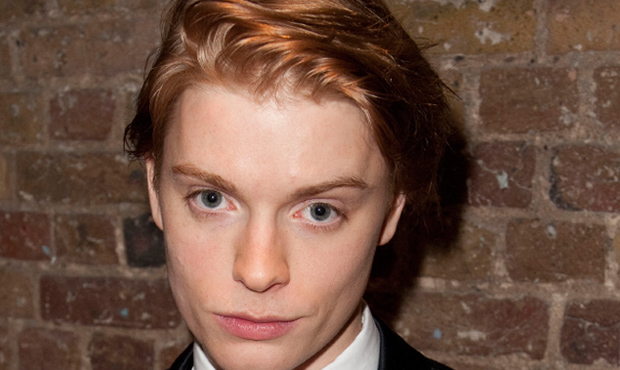Romeo and Juliet (Sheffield Crucible)

© Johan Persson
Freddie Fox – yes, of the acting dynasty – is a born Romeo: part pretty-boy, part rebel without a cause. In Jonathan Humphreys‘ production, he’s the sort that rolls his sleeves up to make sure everyone – boys and girls alike – catches sight of his biceps. He can switch, no problem, from sighing up at a balcony to spitting rage in a street fight. It’s as easy to see why Jonny Holden‘s snarl of a Tybalt might go for him in one way, and Morfydd Clark‘s prim, young Juliet in another.
This is a Romeo and Juliet governed by youth. It’s not just the crux of their initial, immediate attraction, but the driving force behind the sheer strength of passion that runs away with the pair of them. That’s enough to put time out of joint, and Fox and Clark really convey the way in which a night apart can feel like 20 years, while time together flies past in a flash, hardly registered.
No wonder that the two lovers start to fray. Humphreys is astute as to quite how erratic their behaviour becomes. Both rail at their elders – Friar and Nurse respectively – and both threaten suicide, turning blades against their chests. It’s like neither can handle the emotions exploding out of them, nor the lengths they’ll go to to be together. You understand – rare this – why these two teenage heartthrobs stand apart from all others.
The trouble is they stand apart from Verona too, and Humphreys never establishes the rules that govern its society. What looks, initially, like a sink estate rivalry is wealthy enough for leisurely saunas, fashionable clothing and a healthy tipping culture. Hannah Clarke‘s bland corrugated iron and chipboard set is unilluminating – a telegraph pole says nothing about Verona’s famously iffy postal service – and her costumes are downright confusing: mostly seventies with the odd eighties jumpsuit, fifties dicky-bow and police uniforms straight out of Heartbeat. There’s no scheme to it, neither as setting nor as a comment on character. Tracksuits mingle with three-piece suits. People walk around with foot-long blades on show. What country, friends, is this? What era? Where the hell are we?
Without a coherent setting, nothing else follows and, gradually, the world around Romeo and Juliet starts to unravel – and not in a good way. One brawl excepted, there’s no sense of warring factions, let alone any reason for rivalry. Worse, there’s no sense of foreboding – criminal given the play’s final tailspin – and no-one seems too bothered about these teenagers coming apart at the seams. It ends with parents stood around their children’s corpses like party guests that have run out of small talk.
At best, Humphreys instils a vague thread about misogyny: the masked ball pairs up rabbits and wolves, with Michael Hodgson‘s unhinged Capulet urging young couples to cop off as if this were a dead-end town’s debutante ball, and there’s a LADSLADSLADS culture that sees Simon Manyonda‘s Mercutio grab at the skirt of Rachel Lumberg‘s nurse and mock her looks. The trouble is that highlighting the sexism of this society rather undercuts the romance between Romeo and Juliet, and that, in the end, is what we’ve come to see.
Romeo and Juliet runs at the Sheffield Crucible until 17th October.











